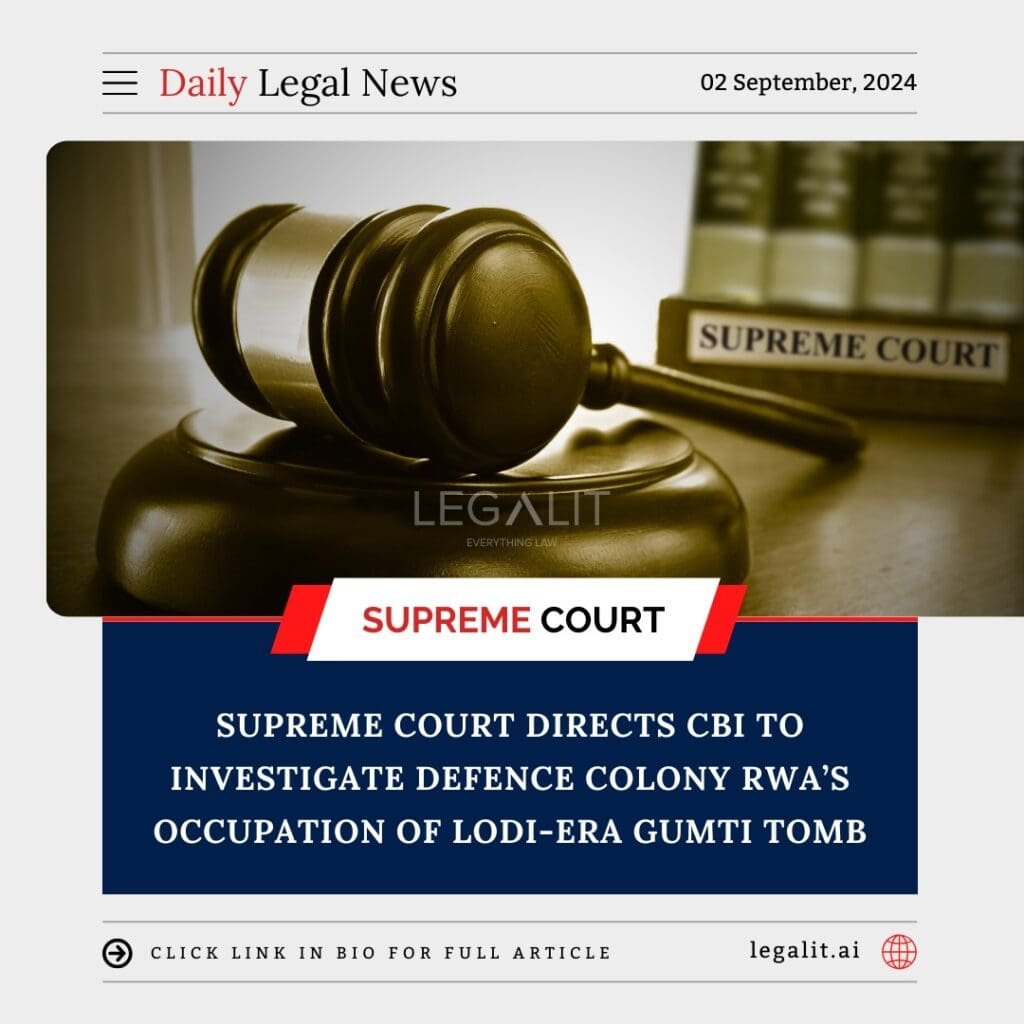
The Supreme Court of India has directed the Central Bureau of Investigation (CBI) to probe the alleged encroachment of a Lodi-era Gumti tomb by the Resident Welfare Association (RWA) of Defence Colony, a posh locality in South Delhi. The order comes in response to allegations that the historical monument, protected under national heritage laws, has been unlawfully occupied and altered by the local RWA, raising concerns over the preservation of India’s cultural heritage.
Background of the Case:
The Gumti tomb, dating back to the Lodi era (circa 15th-16th century), is a small, domed structure that is officially recognized as a protected monument under the jurisdiction of the Archaeological Survey of India (ASI). However, it has been reported that the Defence Colony RWA took over the monument and its surrounding area, allegedly using it for purposes that are not permitted under the law governing heritage sites.
The RWA is accused of constructing unauthorized structures around the monument, converting the area into a storage space, and even installing a tin shed, all without the requisite permissions from the ASI or other competent authorities. These actions have sparked outrage among heritage conservationists and citizens concerned about the protection of India’s historical sites.
Key Observations by the Supreme Court:
- Need for a CBI Investigation: The Supreme Court noted the seriousness of the allegations and the need for a thorough and impartial investigation. The Court emphasized that a full inquiry by the CBI was necessary to uncover the truth behind the alleged encroachment and to hold those responsible accountable for any wrongdoing.
- Protection of Cultural Heritage: The Court underscored the importance of protecting historical monuments, which are part of India’s national heritage. It criticized any unauthorized encroachment or alteration of such sites, highlighting that such acts not only violate the law but also damage the cultural and historical fabric of the country.
- Responsibility of Local Authorities: The Supreme Court questioned how local authorities, including municipal and heritage bodies, allowed the occupation and alteration of the Gumti tomb without taking corrective measures. It pointed out the failure of local governance in preventing encroachment on protected heritage sites and ensuring compliance with heritage laws.
- Impartial Investigation: The Court expressed its dissatisfaction with the current state of affairs and indicated that only an independent agency like the CBI could effectively investigate the matter. It tasked the CBI with determining whether there was any collusion between the RWA and local authorities that enabled this alleged encroachment.
Implications of the Supreme Court’s Order:
The decision to involve the CBI in investigating the encroachment has significant implications for the protection of heritage sites in India. It sends a strong message that the misuse or unauthorized occupation of protected monuments will not be tolerated and that individuals or organizations found guilty of such actions will face legal consequences.
The investigation will also likely put pressure on local authorities to be more vigilant and proactive in protecting cultural heritage sites. Furthermore, it may lead to the identification of gaps in current laws and regulations governing the preservation of historical monuments, potentially prompting calls for stricter enforcement mechanisms.
Broader Impact on Heritage Conservation:
This case has brought renewed attention to the challenges of preserving India’s vast and diverse cultural heritage. Experts and activists have often pointed out that many historical monuments across the country face threats from encroachment, unauthorized construction, and neglect. The Supreme Court’s intervention is expected to galvanize efforts to ensure better protection and management of these sites, fostering greater awareness and accountability among citizens, local authorities, and government agencies.
As the CBI begins its investigation, there will be close scrutiny of how this case is handled and what steps are taken to prevent similar incidents in the future. The outcome could set a precedent for the preservation of heritage sites and the enforcement of heritage laws in India.